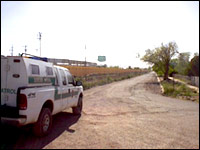Driving down either of El Salvador’s two principal highways, you’re almost sure to end up braking behind a pickup truck that’s jammed with people standing shoulder to shoulder. Occasionally these rural taxis are new vehicles, but most are rickety, rusted, and running on antiquated engines and exhaust-spewing diesel.
Even though 48 percent of Salvadorans live below the poverty line, according to the United Nations Development Program, the huge influx of remittances from migrants in the United States means that more Salvadorans are buying cars, formerly a luxury reserved only for the very rich. And El Salvador is not alone: while Americans and Europeans are buying fewer SUVs and driving less, vehicle sales in most developing countries are on the rise. Toyota’s 2006 first-quarter sales in Central America, for example, were up 9 percent from 2005.
More cars means more gasoline, and gasoline consumption in Central America increased by 10 percent between 2000 and 2003, according to the International Energy Agency. Every Central American country imports oil, so the recent price increases have been painful for these economically weak countries. Cost... Read more
